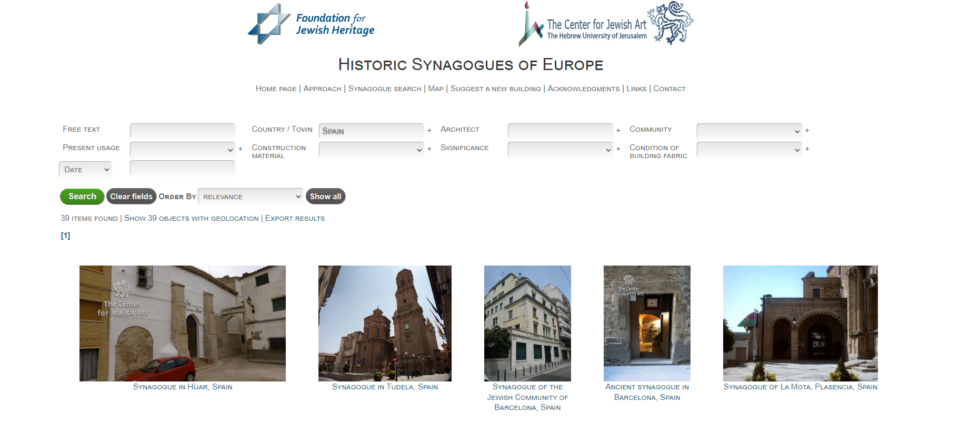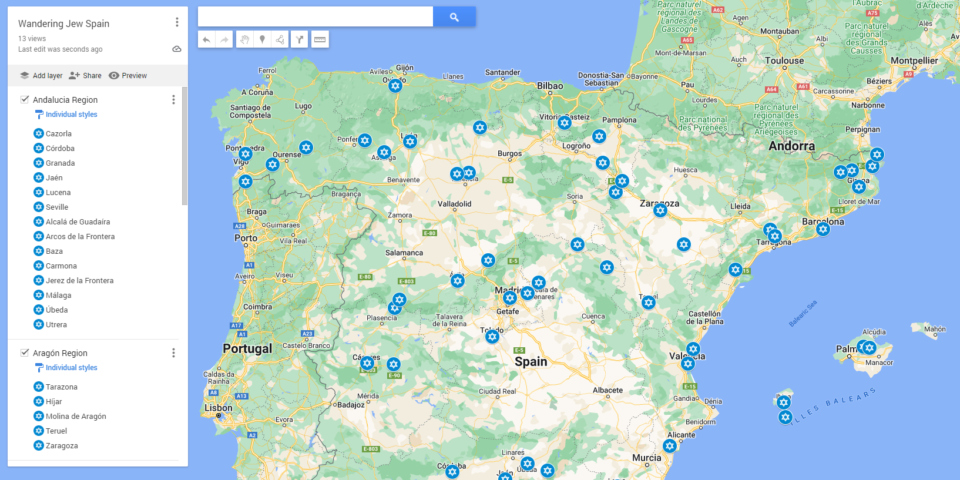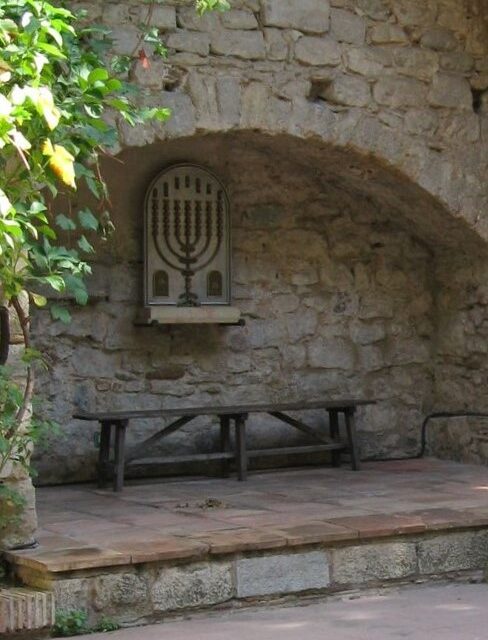August 11, 2024: In a few days, we hope to be traveling to Spain. With the threat of an imminent Iranian attack on Israel in the coming days, who knows what will be. Will our flight get canceled? Will the airport be open when we need to go? Will we want to be away while our home is being attacked? All this looms over our heads as we prepare for the trip as though all is normal.
We have tickets to fly to Barcelona on Wednesday and return to Israel six weeks later. During the first five days of the trip, Mark and I intend to be in Catalonia (northeast Spain) visiting some cities and towns for our Wandering Jew mobile app. On Monday next week, we plan to meet all our children and grandchildren in a rented holiday home in the mountains northwest of Barcelona. Our family reunion (all 20 of us – both from the USA and from Israel) will last ten days, and afterwards when everyone else returns home to their daily routines, Mark and I will continue doing Wandering Jew research in northern Spain. Originally, we thought we could do all of Spain in a month, but there is too much to see and driving distances are not short. Instead, during this trip we will stick to northern Spain (towns with Jewish Heritage sites north of Madrid).
How do we decide where to go? Which towns to visit?
For Spain, the answer is not so simple. Due to the rich Jewish history of the area, many towns have some Jewish history. However, most have nothing left to show of it.
In some larger towns, where traces of their Jewish past can still be seen, Caminos de Sefarad (The Network of Jewish Quarters of Spain) is an association made up of municipalities that seek to attract tourists by highlighting the Jewish Heritage sites within them. Each of the municipalities in the network puts resources towards showcasing their Jewish history, for example, by providing explanatory signage and providing a map with a route to follow to see the Jewish sites in their town.

Currently this network includes 21 towns, and we plan to visit most of them. The few we will not see are south of Madrid.
In addition to the towns that make up this network, there is a site of Historical Synagogue in Europe. A search on Spain reveals 39 synagogues (or the remnants there of). Most of these synagogues are in towns or cities that do not belong to the Network of Jewish Quarters. We added these towns and cities to our list as well.

There is also a site of Jewish cemeteries – The International Jewish Cemetery Project. For mainland Spain, they list 12 sites. Any town that was not already on our list, got added. General Google searches added several more. Currently on our list, based on all the internet research we did, we have 45 cities and towns in northern Spain with Jewish Heritage sites that we hope to visit.
Since all the sites on our list are not yet uploaded to our Wandering Jew app, I added our list of cities and towns to a Google Map. I then used this map to plot out our route, trying to visit as many places as possible during the time we have.

Once the route was decided on, I broke it up into days, and ordered Airbnbs accordingly. In Spain, not including the family reunion, we will be staying in 25 different accommodations over 30 days. On many days we plan to visit more than one city or town.
Now that we know exactly which places we will be going to, for each city or town we do more in-depth research about its Jewish history, always looking for hints of places that might have something left to visit – a name of a street, an address of a house, a museum that might hold something relevant, etc. For the smaller towns, this often involves using Google Translate from Spanish, since very little material is available in English.
One of the resources we use to find sites within a town is Wikimedia Commons. This is a website where people can upload photos and allow others to use them. Tourists often upload pictures and when we search on a particular town, we sometimes find items related to Jewish Heritage. For example, in the town of Guadalajara, Spain, someone posted a photo of the statue of Moses de León. Moses de León, known in Hebrew as Moshe ben Shem-Tov, was a Spanish rabbi and Kabbalist who first publicized the Zohar. After searching and searching the internet, I tried to find where in Guadalajara the statue was located. No luck. I wandered through the town with Google Map street view searching for the statue. No luck. I then wrote an email to the tourist information of Guadalajara not really expecting a reply. Several days went by and they answered with the exact location of the statue! This is only one of countless examples of how we find where to visit.
While I was busy creating our daily itinerary, Mark worked on adding all the Jewish sites in the towns we plan to visit to the Wandering Jew app. When we get to a town, we will verify if what we found on the internet corresponds to what is actually there. From experience, we know that often it does not, and then we change the information in our app accordingly. Sometimes we discover new places to add. Basically as we travel, we play detective for Jewish Heritage sites on our route.
We would not want to spend our retirement any other way.

Have a great trip and enjoy the family!